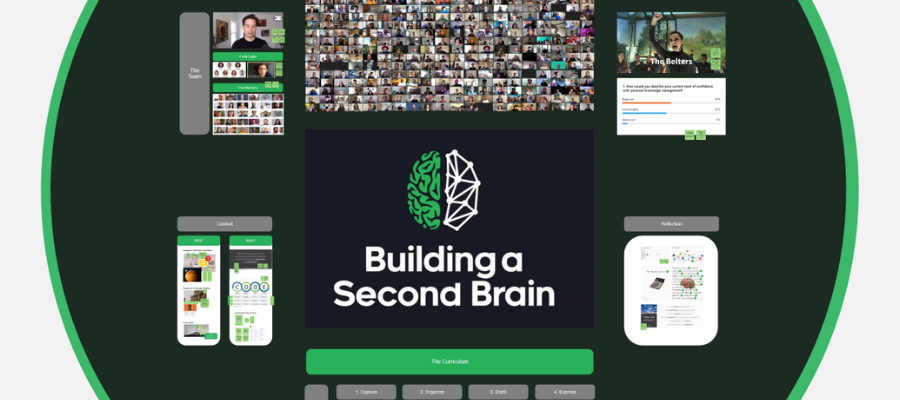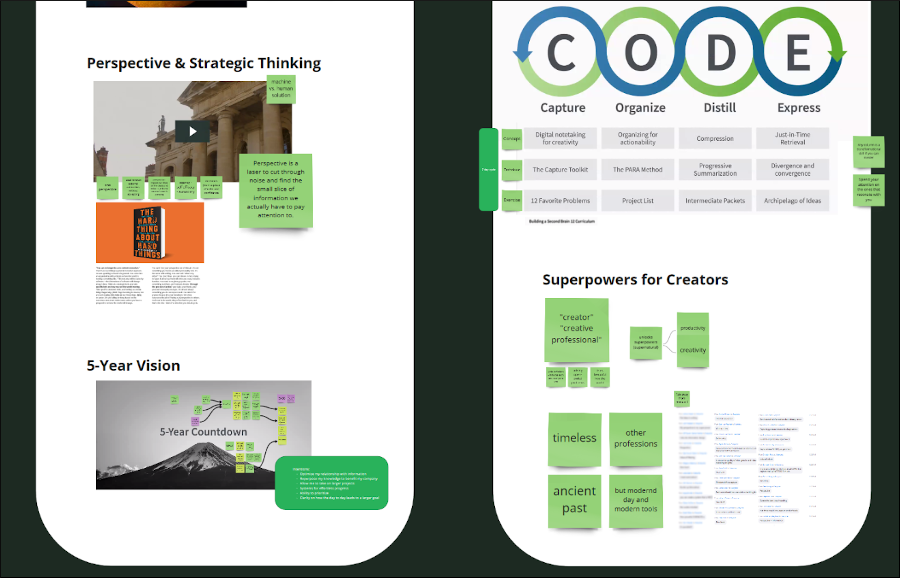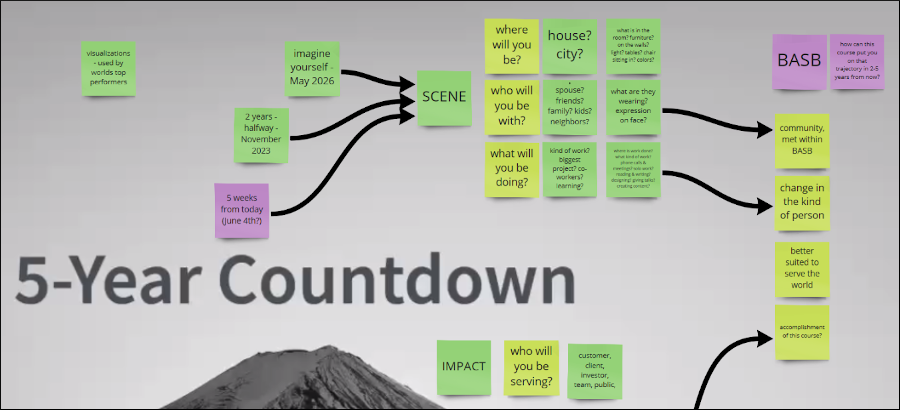
I’m always looking for unique ways in which people are using visual thinking tools to get things done, convey information and bring simplicity out of complexity. That’s why am completely entranced by Michael Dean’s use of Miro to present the content of the Building a Second Brain (BASB) cohort-based personal knowledge base course in a rich, interactive space.
I’ve always viewed Miro primarily as a collaboration tool, useful for group brainstorming, capturing, distilling, organizing and taking action on large volumes of information, knowledge and ideas. Michael turns this idea on its head and instead utilizes it as a medium to document, organize and communicate the structure and content of an incredible body of information.
Click here to view the BASB Miro workspace.
Drag your mouse to move your view of it up and down and right to left. Use the zoom controls in the lower right corner to drill down into the depths of this multi=layered diagram.
As you watch Michael’s 15-minute video overview of it, you’ll see that it resembles Prezi, the popular visual presentation tool, in the way in which it enables you to drill down to an almost infinite amount of detail.
Rethinking Miro as a tool for presenting information
Michael reframes the use of Miro’s workspace in some really intriguing ways, which I have summarized here:
A “round” workspace: At its highest level, Michael’s Building a Second Brain board is framed by a large circle. Within it are rectangular sections devoted to the BASB community, the team that runs it, the curriculum and personal reflection about it. Miro provides a complete set of shapes that you can use to embellish your workspaces. Because it’s primarily focused on sticky notes and rectangular frames, thiscircular design is quite striking. It also gives the reader a sense that everything within the curriculum is part of a cohesive whole.
Sticky notes as labels: Instead of utilizing sticky notes to capture ideas, he reframes them as tools to help guide the reader through his rich visualization of the BASB universe. He uses them as labels or captions to provide meaning and context for the screenshots he has incorporated into his workspace. He also uses sticky notes as tools to share his brief observations about key BASB concepts. In so doing, he adds another level of value to his information-rich diagram.
Rows and columns as organizing principles: In the section entitled curriculum, Michael lays out a set of slides in a grid like format. As he explains in the video, this allows the reader to see the relationships between concepts by viewing the slides from left to right. This helps with sense making and meaning for people who did not take the course who are viewing this workspace.
A variety of content: Michael makes full use of the Miro toolset by incorporating different types of content into his BASB diagram. It includes a video and a flow chart that is built out of sticky notes joined together with connector lines, for example. And, of course, he makes liberal use of screenshots from the curriculum to highlight important sections of it.



Leave a Reply